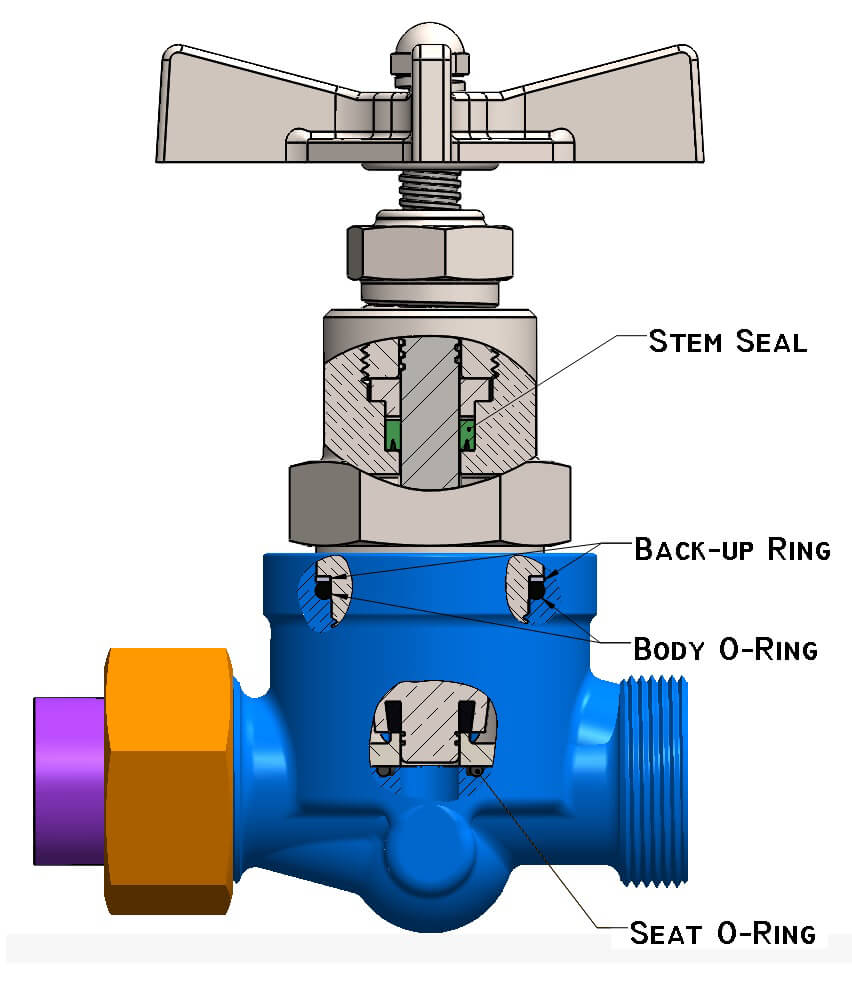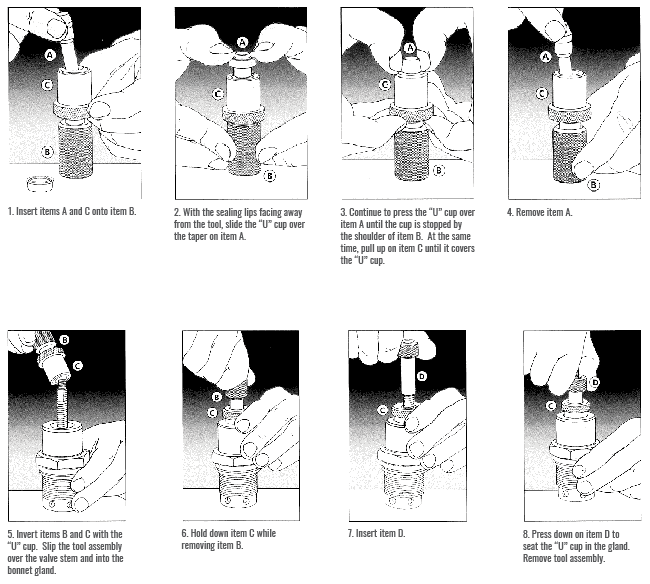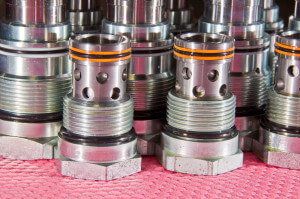The Advantages of Replacing a Soft Goods Kit
 A failing valve is not just troublesome, it is a potential weak link in an otherwise robust chain. Some of the smallest parts within an already compact valve are those most crucial to a system’s overall performance—they have the power to ensure smooth operation or result in catastrophic failure. It is essential, then, to maintain the performance of your valves by replacing soft goods both when necessary and proactively. And you should always follow the practice of installing soft goods kits that are designed and manufactured according to the specifications set forth for the exact valve you are servicing. Read on to learn more about the advantages of using soft goods kits.
A failing valve is not just troublesome, it is a potential weak link in an otherwise robust chain. Some of the smallest parts within an already compact valve are those most crucial to a system’s overall performance—they have the power to ensure smooth operation or result in catastrophic failure. It is essential, then, to maintain the performance of your valves by replacing soft goods both when necessary and proactively. And you should always follow the practice of installing soft goods kits that are designed and manufactured according to the specifications set forth for the exact valve you are servicing. Read on to learn more about the advantages of using soft goods kits.
Why Replace Soft Goods?
Soft goods need to be replaced for two primary reasons. The first and most urgent is when a valve’s sealant is leaking. Visible leakage is a clear indicator that the valve cannot function properly, and threatens the entire application’s reliability and the safety of the equipment operator.
The second reason soft goods are replaced is simply because it is smart to change them at set intervals, even if there is no noticeable damage. Employing such preventive measures ensures continued, healthy and reliable valve operation.
Soft Goods Kits and Their Benefits
Soft goods kits are the most cost-effective solution for repairing faulty valves. Rather than having to purchase a new valve assembly, it is significantly more economical to buy a kit designed to repair your otherwise serviceable valve. In many situations, the stem seal, O-Rings and packing are typically the only portion of the valve that needs to be replaced. In this case, by isolating and repairing the root problem, you now have a well-functioning system that did not necessitate the replacement of the entire structure. This stretches the lifespan of an already long-lasting valve and is more practical than starting from scratch with a new product.
Ensuring your valves operate at peak performance saves time and expense by eliminating or reducing the likelihood of unplanned repairs. Key team members are now freed to focus on other aspects of process outcomes, resulting in increased efficiency and further cost reductions. Soft goods kits are valuable because of their assurance of reliability, their ease of use in fixing an isolated problem and their time-saving convenience.
Where to Select a Soft Goods Kit
Soft goods kits include all necessary components to replace a leaking—or functioning, but older—valve part. Kits typically contain many possible replacement parts, as well as the tools needed to remove the original part. Exactly which replacement parts and which tools will depend on the original valve design’s specifications.
Individual manufacturers sell their own soft goods replacement kits. The specifications of soft goods are set by the original designers of the valve depending on the application for which they will be used. Factors like temperature and exposure to other environmental conditions, in addition to the chemicals and compounds they will be in contact with, influence every decision behind the engineering of soft goods.
For this reason, it is essential to choose a kit supplied by the valve’s original manufacturer. This ensures the same reference number, and reduces the risk of replacing parts with different filling percentages, which are, essentially, the recipes that determine the makeup that fulfills the application requirements of the soft good. It also guarantees that the new parts will not be counterfeit, and are exactly suited to your valve’s application.
Consequences of Using the Wrong Soft Goods Kit
While a faulty valve may seem to perform well with a nonspecific replacement part, it will not function to its fullest potential because it is not precision-matched to the original engineering specifications. In larger and more critical applications, it is especially important to certify that each individual part works correctly, and this can only be accomplished by using materials sourced from the original manufacturer.
It can’t be overstated: replacing soft goods with cheap or illegitimate alternatives is a danger not just to the result of the application, but to the workers controlling and being exposed to these products. The consequences of a valve error extend well beyond the valve itself. Every product and every person working with and relying on that valve will be at risk. This is especially true in high-pressure environments. To prevent failure, it is essential to replace soft goods as soon as trouble presents itself or, better yet, according to a preventive maintenance schedule.
Selecting the Right Soft Goods Kit with CPV
CPV offers soft goods kits for our durable O-SEAL and G-Series product lines. Valves from each line provide long-lasting performance, and should be checked for maintenance at regular intervals, especially if they are used frequently or in extreme conditions. The following sections will review soft goods kit selection and installation for our O-SEAL products.
An O-SEAL valve’s O-ring is recessed within a close-tolerance groove on each of the flat-faced union ends for slip-in, slip-out convenience. This creates a bubble-tight seal that can withstand heavy vibration or pressure surges far better than a gasket.
The soft goods in the cartridge are removable and are specified in different materials for different applications. The software makeup is determined by its compatibility with the liquid or gas it will come in contact with and the temperature range of the application. Because the cartridge is easily removed from the valve for maintenance or replacement, the cost of purchasing a new valve can be avoided. In most cases, the cartridge can be served off-line with a new soft goods kit for re-use another time.
While most stem seals are made of rubber, O-SEAL stem seals are fabricated from polyurethane, Viton and ethylene propylene. Please see the chart below to determine the proper material grouping shown across the top of the chart. Read down the column and select the Kit Number from the row matching the valve size or Dash Number.
For example:
A ½” 380-3 Globe valve requires a soft goods kit. The valve is used in compressor air service, and the compressor is lubricated with a petroleum-based oil. The materials listed in the first column under Material Grouping are satisfactory for this service. Continue down this column to the line for Dash No. -3 (½” pipe size) to determine that the Kit Number is 003803.

How to Use Our Soft Goods Kit
If a seal needs to be replaced, meet our leakproof standards by using the “U” cup installation tool developed exclusively for CPV applications. An inexpensive choice, the “U” cup is a simple solution that replaces stem seals in less than a minute. By compressing the outer sealing lip and expanding the inner lip, the kit makes it easy to slip the “U” cup stem seal over the valve stem. Once the stem seal is properly installed on the valve stem, it can be easily inserted into the bonnet gland and secured without damaging the critical edges of the seal.
For step-by-step instructions on how to install “U” cup steam seals in CPV O-SEAL system valves, see the image below:

In Conclusion
Soft goods kits are an inexpensive method for repairing, rather than replacing, a faulty valve. Because every valve has specific material requirements, it is best to choose a soft goods kit from the original manufacturer, ensuring the exacting specifications and application suitability. Again, this is especially true for the most critical applications. And while soft goods kits can be used when a valve is noticeably leaking, it is wise to change out soft goods according to a predetermined preventive maintenance schedule to ensure prime valve functionality and worker safety.
CPV offers soft goods kits for both our O-SEAL and G-Series valves. For more information about CPV soft goods, or any other general queries, please visit cpvmfg.com or contact sales@cpvmfg.com.

 Valve maintenance is necessary to keep your valves running smoothly at all times. Valves are important to your process, and the results could be disastrous if they stop functioning the way they were designed to. Your valves require maintenance to work their best.
Valve maintenance is necessary to keep your valves running smoothly at all times. Valves are important to your process, and the results could be disastrous if they stop functioning the way they were designed to. Your valves require maintenance to work their best. Valve Lubrication: This section explains the benefits of regularly lubricating valves in a system, even if the valve only performs an opening and closing action. It’s important to lubricate two surfaces that continuously slide over one another. It makes the parts last longer and work better.
Valve Lubrication: This section explains the benefits of regularly lubricating valves in a system, even if the valve only performs an opening and closing action. It’s important to lubricate two surfaces that continuously slide over one another. It makes the parts last longer and work better.